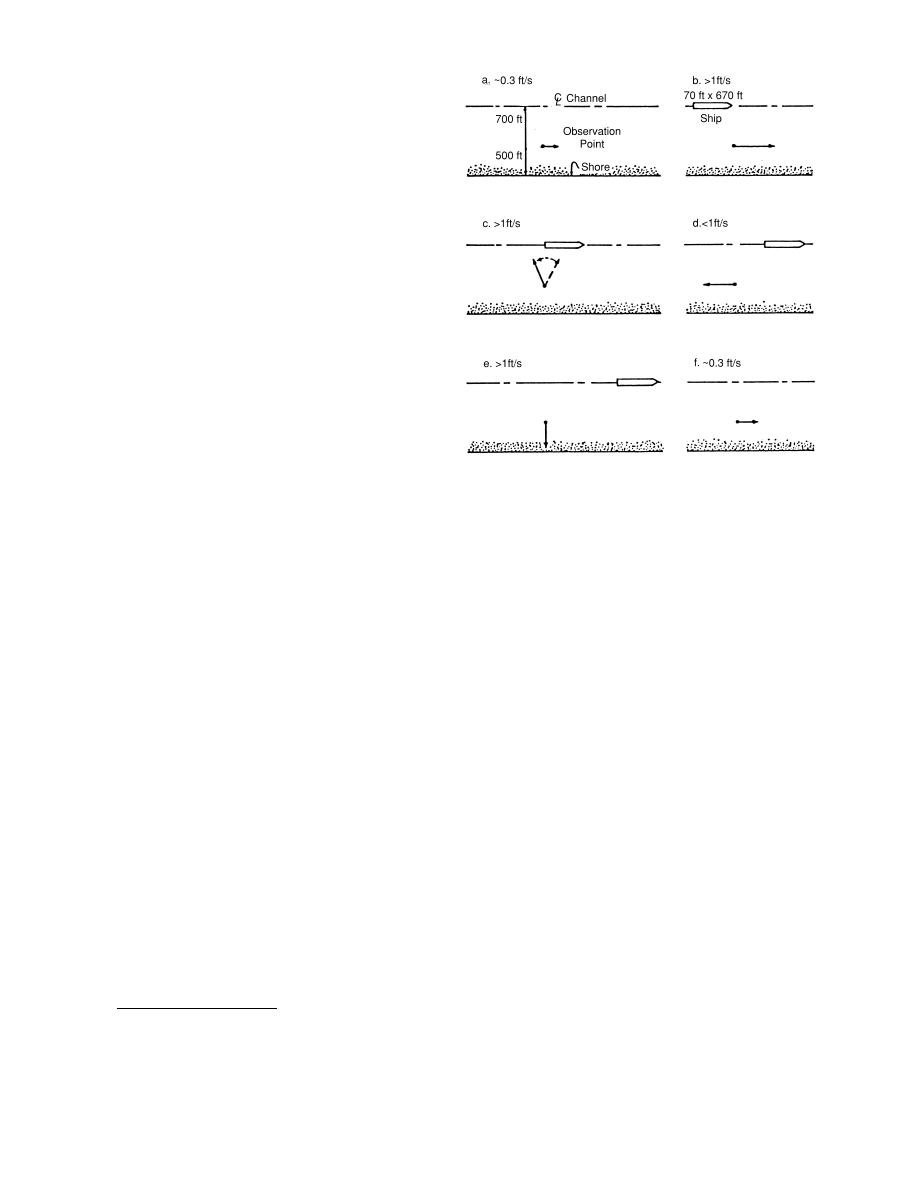
combination of basic theory and empiricism, they
provided a quasi-two-dimensional prediction of
vessel effects. The "quasi" prefix is used since the
two-dimensional predictions are premised on em-
pirically assumed distributions of ambient and
ship-affected velocities. Without collecting appro-
priate field data (which they recommend), the per-
formance of these assumed distributions in the
complex, dredged channel portions of the river
cannot be accurately assessed. However, the model
has been verified against all available Great Lakes
connecting channel data.*
In their reports Hochstein and Adams have
accounted for the effects of ice in terms of the
added propeller thrust required to maintain speed.
This was accomplished by assuming that the pro-
peller jet velocity for a ship in ice increased as
the square of its equivalent open-water velocity.
In their comparison of the effects of prop wash
for various sizes of vessels traveling at existing
speed limits, they often found that the maximum
effects of lower-class vessels reached a maximum
Figure 4. Ship-induced water movements. (From Wuebben
when their available horsepower was insufficient
et al. 1978a.)
to maintain speed. Thus, the largest and most high-
powered vessels could induce substantially larger
deepens. For the restricted sections of the Great
propeller-induced effects than size alone might
Lakes channels, this effect might most easily be
indicate. Quantitative, site-specific predictions of
envisioned as a channel constriction such as a
ship-induced velocity distributions across selected
bridge pier.
river cross sections were provided.
The phenomenon of nearshore drawdown and
surge may be explained in terms of the moving
Drawdown and surge
When a vessel is in motion, even in deep wa-
trough. In sufficiently deep water the moving
ter, the water level in the vicinity of the ship is
trough appears as a fluctuation of the elevation
lowered and the ship with it (called vessel squat).
of the water surface. To an observer in a shallow
or nearshore area where the depressed water level
For the same ship this effect increases as the ves-
approaches or reaches the riverbed, the water ap-
sel speed increases or as the water depth decreases.
pears to recede from the shoreline as the ship
When a ship enters a confined water, there is a
passes; this is followed by an uprush and finally
considerable change in flow patterns about the
a return to the normal level after the vessel-in-
hull. The water passing beneath the hull must pass
duced surface waves are damped. To analyze the
at a faster rate than in deep water, and as a result
mechanics of sediment motion during vessel pas-
there is a pressure drop beneath the vessel, which
sage, two-dimensional, near-bottom velocity mea-
increases vessel squat. In a channel that is restricted
surements were collected at a number of locations
laterally, this effect is further exaggerated.
along the St. Marys, St. Clair and Detroit Rivers
There is, however, another problem associated
during periods with and without ice (Alger 1977a,
with the water level drop caused by the move-
1978, 1979a, Wuebben et al. 1978a).
ment of a ship in confined waterways. The water
An example of these measurements (from
level drop becomes, in effect, a trough extending
Wuebben et al. 1978a) is presented in Figure 4 to
from the ship to the shore and moves along the
illustrate the magnitude and complexity of the
channel at the same velocity as the ship. As the
situation. The figure presents water velocities un-
ship size or speed increases, this moving trough
der the ice cover during the passage of a 670-ft
ore carrier near Six Mile Point on the St. Marys
River. The observation point was located in about
* Personal communications, Don Williams, Detroit Dis-
10 ft of water, and there was an ambient velocity
trict, COE.
5



 Previous Page
Previous Page
